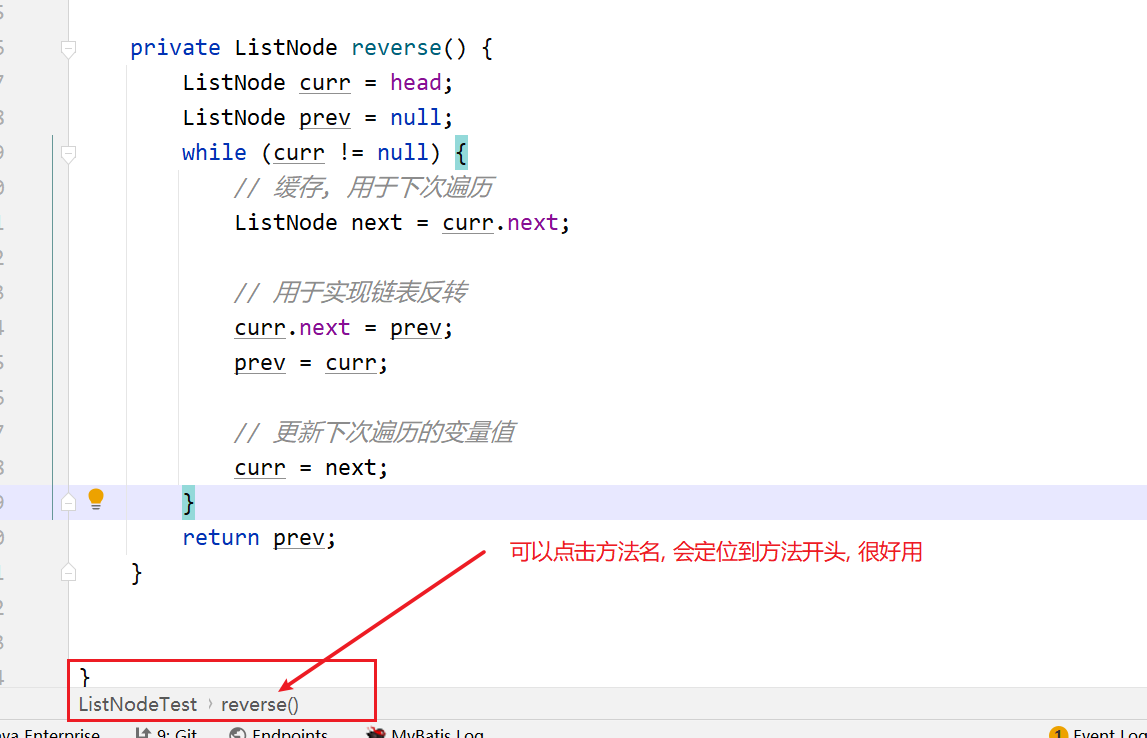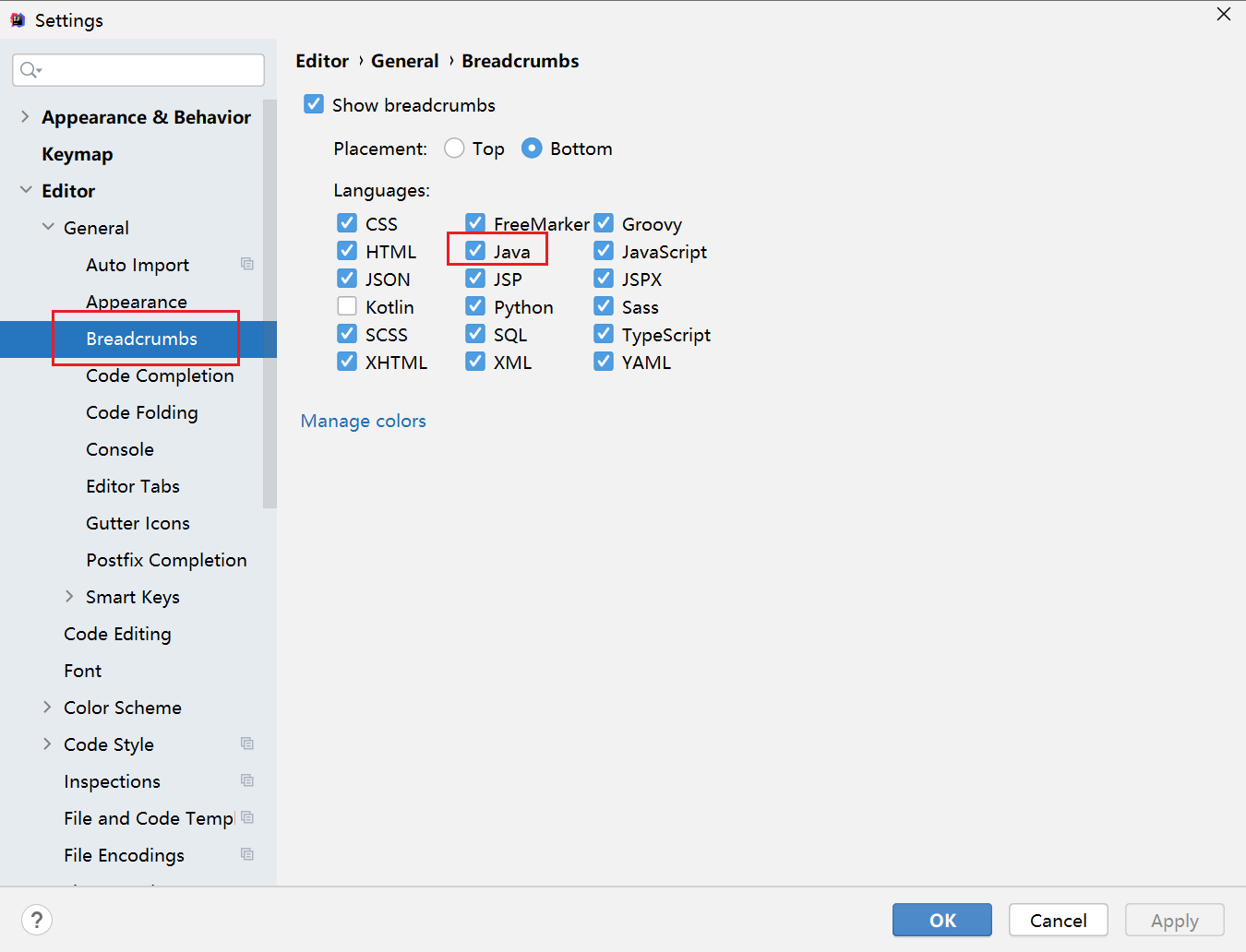idea 如何配置 java 的面包屑导航
本文共 138 字,大约阅读时间需要 1 分钟。
面包屑导航: 可以展示当前光标所在的方法, 用于快速确认当前所在方法和定位当前所在方法的开头

在之前的版本中, idea 该面包屑导航是开启的, 在 2020 版本后, 默认是关闭状态
editor > general > breadcrumbs > 勾选 java > ok
转载地址:http://gpcg.baihongyu.com/
你可能感兴趣的文章
Network Dissection:Quantifying Interpretability of Deep Visual Representations(深层视觉表征的量化解释)
查看>>
Network Sniffer and Connection Analyzer
查看>>
Network 灰鸽宝典【目录】
查看>>
Networkx写入Shape文件
查看>>
NetworkX系列教程(11)-graph和其他数据格式转换
查看>>
Networkx读取军械调查-ITN综合传输网络?/读取GML文件
查看>>
network小学习
查看>>
Netwox网络工具使用详解
查看>>
Net与Flex入门
查看>>
net包之IPConn
查看>>
net发布的dll方法和类显示注释信息(字段说明信息)[图解]
查看>>
Net操作配置文件(Web.config|App.config)通用类
查看>>
NeurIPS(神经信息处理系统大会)-ChatGPT4o作答
查看>>
neuroph轻量级神经网络框架
查看>>
Neutron系列 : Neutron OVS OpenFlow 流表 和 L2 Population(7)
查看>>
NEW DATE()之参数传递
查看>>
New Relic——手机应用app开发达人的福利立即就到啦!
查看>>
new 一个button 然后dispose,最后这个button是null吗???
查看>>
next项目部署到服务器pm2进程守护
查看>>
nexus上传jar
查看>>